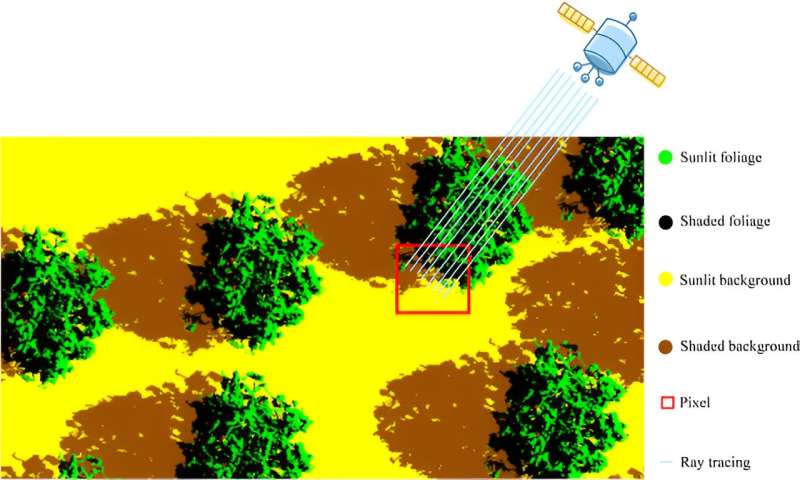This article has been reviewed according to Science X's editorial process and policies. Editors have highlighted the following attributes while ensuring the content's credibility:
fact-checked
trusted source
proofread
New insights into tree canopy light absorption and its climate implications

The clumping index (CI) is critical for accurately modeling light absorption in plant canopies, affecting predictions of photosynthesis and climate dynamics. Traditional methods of estimating CI, however, typically ignore its variability with observation angle, leading to potentially significant errors in environmental assessments.
A recent publication in the Journal of Remote Sensing, published April 12, 2024, delves into how vegetation canopies influence light absorption in various ways, a crucial aspect for understanding photosynthesis and climate interactions.
For the study, by employing the advanced large-scale remote sensing data and image simulation framework (LESS) model within the radiation transfer model intercomparison (RAMI)-V framework, the team meticulously calculated the CI across various viewing angles and vegetation types, such as coniferous and broad-leaf forests. This index measures how leaves within a canopy are clustered, affecting the passage of light through the canopy.
Their findings highlight that CI is not a static trait but varies significantly with the zenith angle and the type of vegetation, changing with seasonal cycles and canopy structures. For instance, coniferous forests show minimal variation in CI with changes in the zenith angle, whereas broad-leaf forests display more pronounced changes.
These directional characteristics of CI are essential for refining radiative transfer models used in global climate predictions, demonstrating a sophisticated approach to ecological modeling that accounts for the complex realities of natural vegetation.
Dr. Donghui Xie, the lead researcher from Beijing Normal University, says, "By accounting for the directional variability of CI, we can significantly refine our models of how vegetation interacts with light, improving the accuracy of global climate models and ecological forecasts."
This study reveals how vegetation canopies vary in their impact on light absorption, crucial for photosynthesis and climate modeling. Using the LESS model to analyze the CI across different vegetation types, the research highlights significant variability influenced by factors like vegetation type and season. These insights enable more accurate climate predictions and inform sustainable forestry practices, enhancing ecological and environmental management.
More information: Jinke Xie et al, Analysis of the Directional Characteristics of the Clumping Index (CI) Based on RAMI-V Canopy Scenes, Journal of Remote Sensing (2024). DOI: 10.34133/remotesensing.0133
Provided by Chinese Academy of Sciences





















